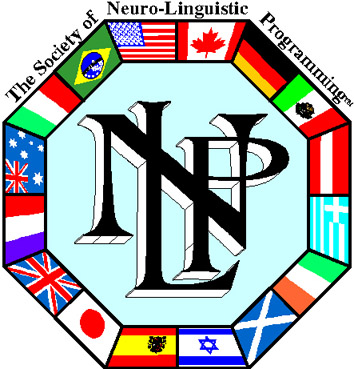The Milton Model
The Milton Model comes from observations of Milton Erickson MD by Richard Bandler and John Grinder who founded the American Society of Clinical Hypnosis.
Erickson observed that although he knew what he did, to explain it was much too difficult for him.

The warning message that we sent … was an ambiguity that would be clearly understood
Alexander Haig
Contrast the Meta Model
In volumes I and II of Patterns of Hypnotic Techniques, Bandler and Grinder (and in volume II Judith DeLozier) achieve what Erickson himself could not in that respect.
The Meta model is a model of language about language; it uses language to explain language.
It examines the surface structure of language in order to gain an understanding of the deep structure behind it.
So the Meta model chunks down in order to recover distortions, generalisations and deletions.
In that respect it is precise and concentrates upon the specifics.
The Milton Model – mirror image
The Milton model is a mirror image of the Meta model. Whilst the Meta model chunks down to specifics, the Milton model chunks up to produce vagueness and ambiguities.
It requires the listener to use his unconscious mind to search for meaning (known as transderivational search) and to go into an altered state or trance.
The Milton Model and trance
Think about the number of times you go into trance today.
You are busily undertaking a task of some kind, engaged in a sport or studying, and you wonder where that last hour went.
Your unconscious mind had taken over and you were running on autopilot. This is known as time distortion.
When you are in trance you may not remember consciously everything that happened (known as amnesia).
You may have been able to hallucinate something that isn’t there or fail to see something that is there.

I negatively hallucinate my cuff links when they are six inches away from where I normally leave them although they are clearly within my vision.
It is possible to regress (or go back in time) or progress (imagine a future event).
Have you ever suffered an injury in a sporting event, or when you have been busy around the house and not known about it until you see the evidence in the form of a large bruise or blood running from an open wound? It is only then that it seems sore or you notice the throbbing. This is known as anaesthesia.
Double binds
There is an assumption contained in the sentence. My mother was very good at double binds when I was a boy. “Are you going to the shop for me before lunch or afterwards?”
The hypnotist might say, “One of your feet will feel warmer than the other. It may be the left foot or it may be the right.”
Examples: “Would you like to order the book now or later?” “Will you finish reading this article in the next few minutes or come back to it tomorrow?” “Will you look at the rest of this website today or come back to it over time and again over the next few weeks?”
Tag questions
“Conversational postulate” is merely a command in disguise. That is to say, it takes the form of a question but it is telling you what to do: “Do you see what I am saying?” “Do you feel prepared to sign our agreement now?” “Wouldn’t you like to go for a walk in the countryside today?” “Will you just let go now?” “Can you imagine how good you will feel?”
The Milton Model - Conversational postulates
“Conversational postulate” is merely a command in disguise. That is to say, it takes the form of a question but it is telling you what to do: “Do you see what I am saying?” “Do you feel prepared to sign our agreement now?” “Wouldn’t you like to go for a walk in the countryside today?” “Will you just let go now?” “Can you imagine how good you will feel?”
Selectional Restriction violation
We have all heard expressions like, “What did his actions say to you?” Of course, his actions cannot speak. We use this sort of picture language all the time.
You’ve heard a mother say to a child, “How is teddy feeling today?” We are suggesting that an inanimate object has feelings.
“The walls have ears”. “The cream trifle was calling to me from the refrigerator.” “My car knows the way to the shops; it goes there every day.”
The Milton Model - Quotes and extended quotes
Using a quote moves the attention of the listener away from the speaker. I love to use them.
Once that attention is moved it is easier to get information into the unconscious mind because the listener is focusing inwardly. Extended quotes aid that process.
“Billy said that you knew somebody who had told Fred that the car worked perfectly properly last time he drove it.”
“My sister tells the story about her husband’s friend who liked to imagine flying with her in his aeroplane.”
It is difficult not to go into trance while focusing on sentences like these.
Phonological ambiguities
Words that sound the same but have different meanings. They may be spelt the same or differently, but they sound the same.
Again, once the transderivational search for meaning commences, the listener goes into trance.
Examples: there/their; plane/plain; son/sun; rite/right; not/knot.
The Milton Model - Syntactic ambiguities

“They are visiting relatives”. Are “they” visiting the relatives or do “the relatives” visit?
“Flying planes can be dangerous”. Think about that one.
“Hypnotising hypnotists can be tricky”. Another one to ponder!
Scope ambiguities
“The older boys and girls.” Are the girls old as well?
“The intruding sounds and pictures”. Do the pictures intrude as well?
Punctuation
ambiguity
These may be sentences that run on with a linking word such as: “I can see the time on your watch my eyes now.”
Another type of punctuation ambiguity is known as the improper pause. It occurs when … I … don’t … uh … complete … uh … the … sentence. It very quickly induces trance.
I have a friend who constantly starts a sentence, begins another after a few words, then another and then another, and never comes back to his original thought.
Or, if he does, I am no longer there because I have long since gone into trance.
The Milton Model – other examples
These are all examples of the type of language used in the Milton model.
You might also like to read about embedded commands in a separate article on this website.
Re-read the examples above and then see how many others you can write out for yourself.
Gain FREE access to my self-confidence video
To gain free access to my self-confidence video enter your email address and first name in the box below. This will also keep you up-to-date with my free newsletter Inspirations.
As a bonus for subscribing you'll receive the first three chapters of my book Towards Success, where you can learn more about NLP techniques, from Anchors to Modelling, and my 50 favourite inspirational quotations.
Return from The Milton Model to
The Secret of Mindpower & NLP Home
Return to Site Search & Contents Page

Change your life in just 5 weeks
Discover the pathway to success with my online video course. Learn more

Download NEW ebook Your Genius Within and find out how to uncover your own inner genius

Articles on HYPNOSIS:
- Big events
- Conversational Hypnosis
- Covert hypnosis
- Deepening self-hypnosis
- Depression Hypnosis
- Handshake interrupt
- How to do self-hypnosis
- How to hypnotise your audience
- Hypnosis and Weight Loss
- Hypnosis NLP
- Hypnosis: Right or Wrong
- Hypnosis Stories
- Hypnotic language
- Hypnotism Stories
- Hypnosis story for you
- Hypnosis to quit smoking
- Instant self-hypnosis (age regression)
- Practical self-hypnosis
- Self-Hypnosis
- The Milton Model
NLP Articles
- Anchors
- Anchors explained
- Anger Management tips
- Anxiety Panic Attacks
- Beating disappointment
- Beating drug addiction
- Best self-help book
- Big events
- Body control module
- Body language attraction
- Body language flirting
- Body language in communication
- Body language interpretation
- Body language of a liar
- Body language signs
- Boost self-confidence
- Building Rapport
- Changing bad habits
- Changing beliefs
- Changing States
- Children
- Christmas (Holidays)
- Christmas & New Year greetings
- Chronic pain management
- Conquering Fear
- Crohn's Disease
- Cure for a Phobia
- Deal with your fear
- Deletion
- Determining your destiny
- Developing your senses
- Disaster to Triumph
- Distortion
- Drawing the line
- Embedded Commands
- Enthusiasm
- Exams
- Expecting the Best
- Expert Relationship Advice
- Eye accessing cues
- Fear of driving
- Fear of elevators
- Fear of flying
- Fear of the dentist
- Fear of vomiting
- Fear, Mental Blocks & Hesitation
- Fear, Uncertainty and Doubt
- Fight or flight response
- Finding Solutions
- Forever Worried?
- Friendly persuasion
- Generalisation
- Get the life you want
- Getting lucky
- Getting over your past
- Goal Setting Tips
- Goal Setting Tools
- Goal Setting Tools, More
- Great self-help books
- Grief
- Happy retirement
- Healthy Mind
- High blood pressure
- How long will I live?
- How to be lucky
- How to read body language
- Hypnosis & NLP
- Hypochondria
- Imagining perfect performance
- Improving speed reading
- Instant Mood Lift
- Interviews
- Knowing yourself
- Learn NLP
- Life Values
- Maintaining weight loss
- Make you thin
- Making it happen
- Managing change
- Meddling Mom
- Meeting People
- Mental rehearsal techniques
- Meta Model
- Metaphor
- Modelling
- Modelling Genius
- More NLP techniques for weight loss
- NLP Books
- NLP Courses
- NLP Practitioner Course
- NLP Master Practitioner Course
- NLP Secret
- NLP jargon buster
- NLP Modelling helped me
- OCD symptoms
- OCD treatment
- Overcoming low self-esteem
- Overcoming stage fright
- Pacing & Leading
- Persuasion
- Presuppositions
- Presuppositions (2)
- Problem solving
- Public Speaking
- Reaching agreement
- Reframing
- Self-confidence
- Self limiting beliefs
- Self-image
- Sportsmen Guide
- Stage fright tips
- Stammering
- States
- Stop binge eating
- Stop Smoking
- Subliminal Persuasion
- Success Principles
- Techniques for persuasion
- Techniques for weight loss
- The meaning of NLP
- Time & NLP
- Towards
- Towards & Away
- Ulcerative colitis
- Weight Loss
- Weight loss techniques
Articles about THE SECRET of:
- Abundance Mentality
- Achieving more
- Beating Domestic Violence
- Being bothered
- Being Happy
- Best Self-help Book
- Conquering road rage
- Coping with criticism
- Dealing with pride
- Defeating stress
- Discover the secret of wealth
- Genius
- Getting off to sleep
- Getting over a break up
- Getting over your temper tantrum
- Health
- How to deal with grief
- Imagination
- Influence
- Love
- Making Money
- Managing others
- Memorising a Deck of Cards
- Memory
- My Success
- Organising Memory
- Overcoming tiredness
- Overcoming worry
- Perpetual energy
- Remembering
- Secret Law of Attraction books
- Sleeping well
- Speed Reading
- Super Memory
- Surviving a recession
- Surviving negativity
- The Secret Law of Attraction
- Towards
- Teachers of the Secret
- Waiting for God
- Wealth Building
- Weight Loss
Articles about COACHING:
- Barriers to effective communication
- Communication
- Executive Business Coaching
- Feedback
- Free interview tips
- Free Life Coaching
- Goal Setting Tips
- Goal Setting Tools
- Goal Setting Tools, More
- Life & Executive Coaching
- Personal Development Plan
- Problem solving
- Success Principles
- The Secret of my Success
- Time Management
Articles on GENIUS and MIND POWERS:
- Activating genius
- Become a genius
- How long will I live?
- Mind Powers
- Misty Reflections
- Modelling Genius
- The Secret of Genius
Articles about MEMORY:
Articles about RELATIONSHIPS:
- Beating domestic violence
- Body language flirting
- Expert relationship advice
- Healthy family relationships
- Hurt feelings
- Love
- Relationship problem advice
- Signs of true love
- The secret of getting over a break up
Articles on WEALTH:
Articles on WEIGHT LOSS:
- Best Weight Loss Plan
- Body control module
- Easy weight loss
- Hypnosis and Weight Loss
- Maintaining weight loss
- More NLP techniques for weight loss
- NLP techniques for weight loss
- NLP techniques to make you Thin
- NLP weight loss techniques
- Stop binge eating
- The Secret of weight loss
- Weight control help
- Weight loss tips
- Why have I lost weight?
Real Women of Genius Articles:
Real Men of Genius Articles:
- Abraham Lincoln
- Albert Einstein
- Antoni Gaudi
- Carl Jung
- Charles Darwin
- Charles Dickens
- Christopher Wren
- Confucius
- George Washington
- Hannibal
- Horatio Nelson
- Isaac Newton
- Julius Caesar
- Lawrence of Arabia
- Leonardo da Vinci
- Michelangelo
- Mohatma Gandhi
- Napoleon Bonaparte
- Nicolas Copernicus
- Oscar Wilde
- Rembrandt
- Robert Burns
- R L Stevenson
- Socrates
- Walt Disney
- William Shakespeare
- Wolfgang Amadeus Mozart
Articles on SECRET and INSPIRATIONAL TEACHERS:








New! Comments
Have your say about what you just read! Leave me a comment in the box below.